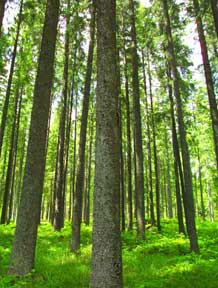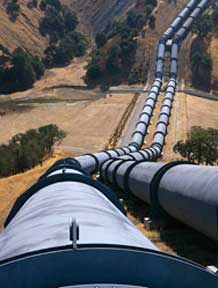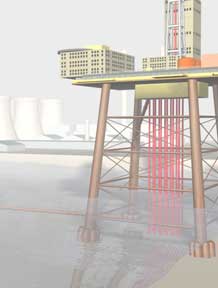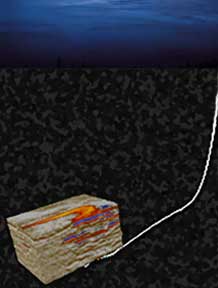Biomass power plant

| Source: | biomass power plant |
|---|---|
| CO2 capture: | post combustion |
| Transport: | pipeline |
| Store: | saline aquifer or depleted gas field |
| Location of store: | offshore or onshore |
Biomass fuel includes wood, and agricultural and food processing wastes, as well as sewage sludge and animal manure.
Using crop residues, sewage or manure — wastes that are continually generated by society — to generate electricity offers environmental benefits in the form of preserving precious landfill space and reducing overall anthropogenic emissions.
If wood is the primary fuel, there is very little sulphur dioxide (SO2) in waste gases, when compared with say a coal plant.
However some biomass power plants show relatively high NOx (nitrogen oxide gases)emissions when compared to other combustion technologies. Both SO2 and NOx have serious effects on both the environment and human health.
Biomass can be directly burnt or converted to gas before burning. Direct Combustion power plants burn the biomass fuel directly in boilers that supply steam for the same kind of steam-electric generators used to burn fossil fuels. In biomass gasification, biomass is converted into a gas — methane — that can then fuel steam generators, combustion turbines, combined cycle technologies or fuel cells.
The main benefit of biomass gasification, compared to direct combustion, is that extracted gases can be used in a variety of power plant forms.
Capture
Capture in biomass power plants will be similar to that in fossil fuel power stations as described in the Post-combustion coal fired power plant option.
CO2 transport

After capture, CO2 must be transported to suitable storage sites.
Pumping carbon dioxide though pipelines is the cheapest form of transport, and it is a well known and reliable technology.
However, with the increased number and carrying capacity of pipelines that a large-scale CCS industry would require, there will need to be further studies of pipeline safety, particularly in heavily populated areas, or areas of high seismicity where earthquakes may cause damage to the pipes.
If leakage occurred from a pipeline in open, windy areas of country, there are unlikely to be dangers to people, livestock or crops or to the ecosystem because the escaping CO2 would mix with the surrounding air and would probably disperse rapidly.
However, in localised low-lying areas where there is little wind, leakage could be a problem. This is because CO2 is heavier than air and tends to accumulate in such places.
Similarly in buildings which have basements or underground rooms, CO2 levels may have to be monitored during periods of known leakage - though again the advanced state of pipeline technology is such that CO2 leakage is thought very unlikely.
Storage

Once it reaches the proposed storage site, the compressed CO2 is pumped down a well into the deep underground reservoir where it will be permanently stored.
Physical, impermeable caprock for example, and chemical trapping mechanisms prevent the CO2 from escaping to the surface.
Depleted oil or gas fields are attractive for geological storage of carbon dioxide because we know that they held oil and/or natural gas for, in many cases, millions of years. Moreover, the geological character of these reservoirs is well known from years of study during extraction of oil and gas.
The main disadvantage of using depleted oil fields is their geographic distribution which may not be ideal in relation to point sources (like power stations) and their limited capacity in comparison with the size of big point sources.
Saline aquifers are deep rock formations that are very similar to those that contain oil or gas except that they contain highly concentrated brine in the rock pores instead of oil or gas. When carbon dioxide is pumped into them, the highly saline water that they contain is pushed out and replaced by carbon dioxide. Their main advantage for CCS is their large potential storage volume and their commonness. For example much of the North Sea, mainland Europe and the Texas Gulf Coast is underlain by large saline aquifers.
Their main disadvantage is that relatively little is known about them, compared to oil or gas fields. Therefore a lot of work is required to prove that they will retain carbon dioxide permanently before it is pumped into them. Unlike storage in oil fields or coal beds no useful by-product will offset the cost of storage.
This process of injection of CO2 into rock is already understood and has been carried out for many years in the process of ‘Enhanced Oil Recovery’ or EOR. In EOR, carbon dioxide is injected into an oilfield to produce the remaining oil and gas that cannot be recovered by other means. Carbon dioxide is a very good solvent for oil and makes it flow more easily through the reservoir rock towards the oil production wells.
EOR is attractive for geological storage because the geological character of hydrocarbon reservoirs is well known, and because costs of injection may be partly offset by the sale of additional oil that is recovered.
However in the saline aquifer CO2 storage option there is no economic advantage in injecting CO2 because the object is not to improve oil recovery but simply to dispose of CO2. Thus there is no direct financial incentive to carry out injection, only a moral or climate abatement imperative. This means that CCS can be expensive in this option (see below).
Safety of storage

The most important public concern about CCS is whether stored CO2 will leak back to the surface (on land or at sea) and into the atmosphere. This would be a hazard because CO2 is an asphyxiant but it would also mean that the process would not be reducing CO2 emissions.
However, for well-selected, designed and managed geological storage sites, the IPCC estimates that risks are low. CO2 could be trapped for millions of years, and well selected stores are likely to retain over 99 per cent of the injected CO2 over 1000 years.
There are examples of successful storage at demonstration sites. For example, Norway's Sleipner gas field is the oldest store of CO2 in Europe. Environmental assessment of the gas field has concluded that storage is successful. At another demonstration site at Weyburn in Canada, the likelihood of stored CO2 release has been determined to be less than one percent in 5000 years.
There are places in the world like Italy and Germany where carbon dioxide is naturally coming to the surface because of deep volcanic activity. Effects of leakage are very localised and can be managed successfully and safely in urban areas.
Regulation
Presently CCS is licensed and controlled mainly under petroleum legislation but soon there will be specialised legislation for CCS in Europe through an EC Directive. The Directive states that leakage and potential long-term care of storage sites must be addressed before CCS can be developed to its full potential.
Cost

Conventional CCS on a fossil fuel power station can reduce CO2 emission by 80-90%. However, burning biomass in a boiler coupled with CCS allows a power station to have negative emissions overall. This is because the vegetation will have absorbed CO2 through its lifetime and the CO2 liberated from its burning will be isolated from the atmosphere in storage. Thus even though CCS would increase the cost of electricity from a biomass power plant, customers would know that electricity produced there would actually be reducing the CO2 content of the atmosphere, making this technology particularly attractive.
It may be difficult to choose between electrical biomass power plants with CCS and renewable energy sources on the basis of cost. This is because in some countries (e.g. Britain) renewable electricity generation is encouraged by Government subsidy, whereas CCS development is not.







